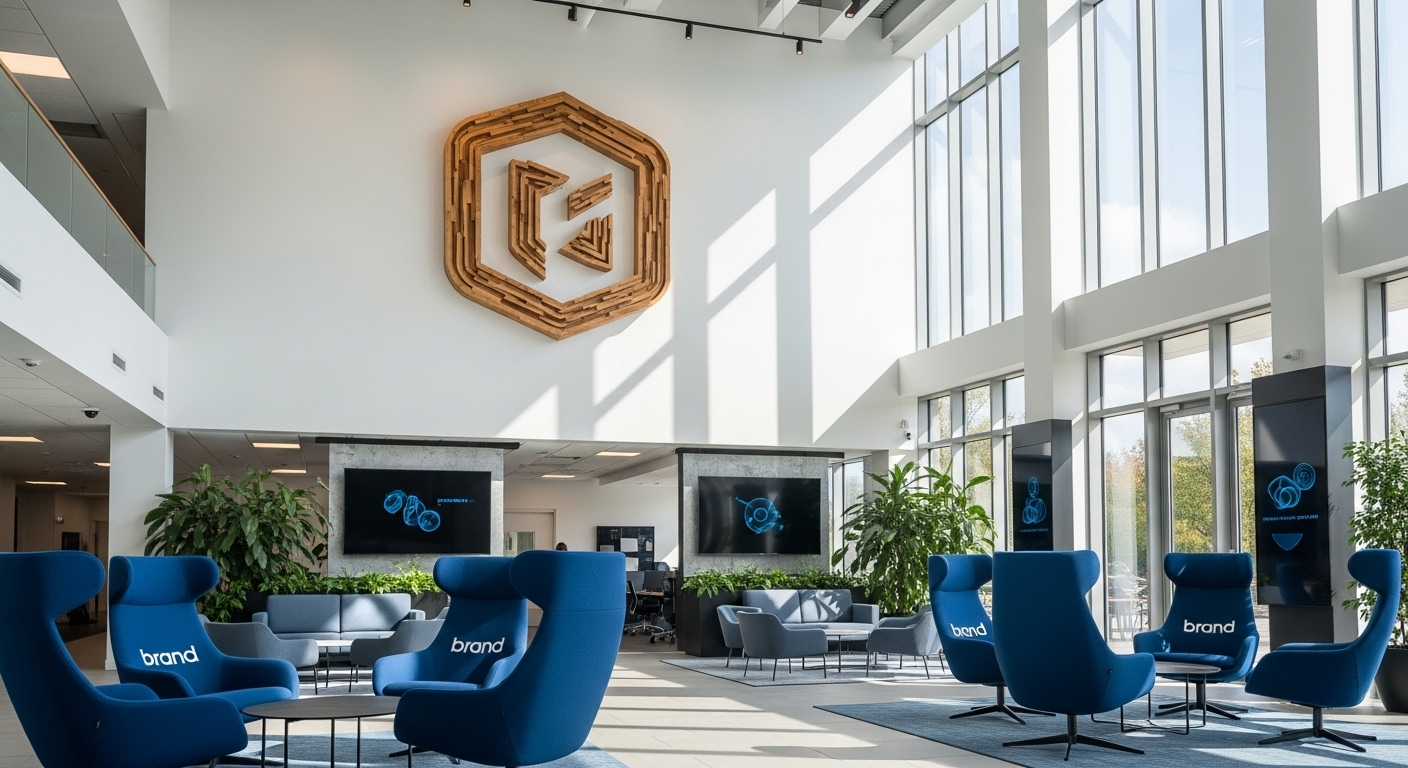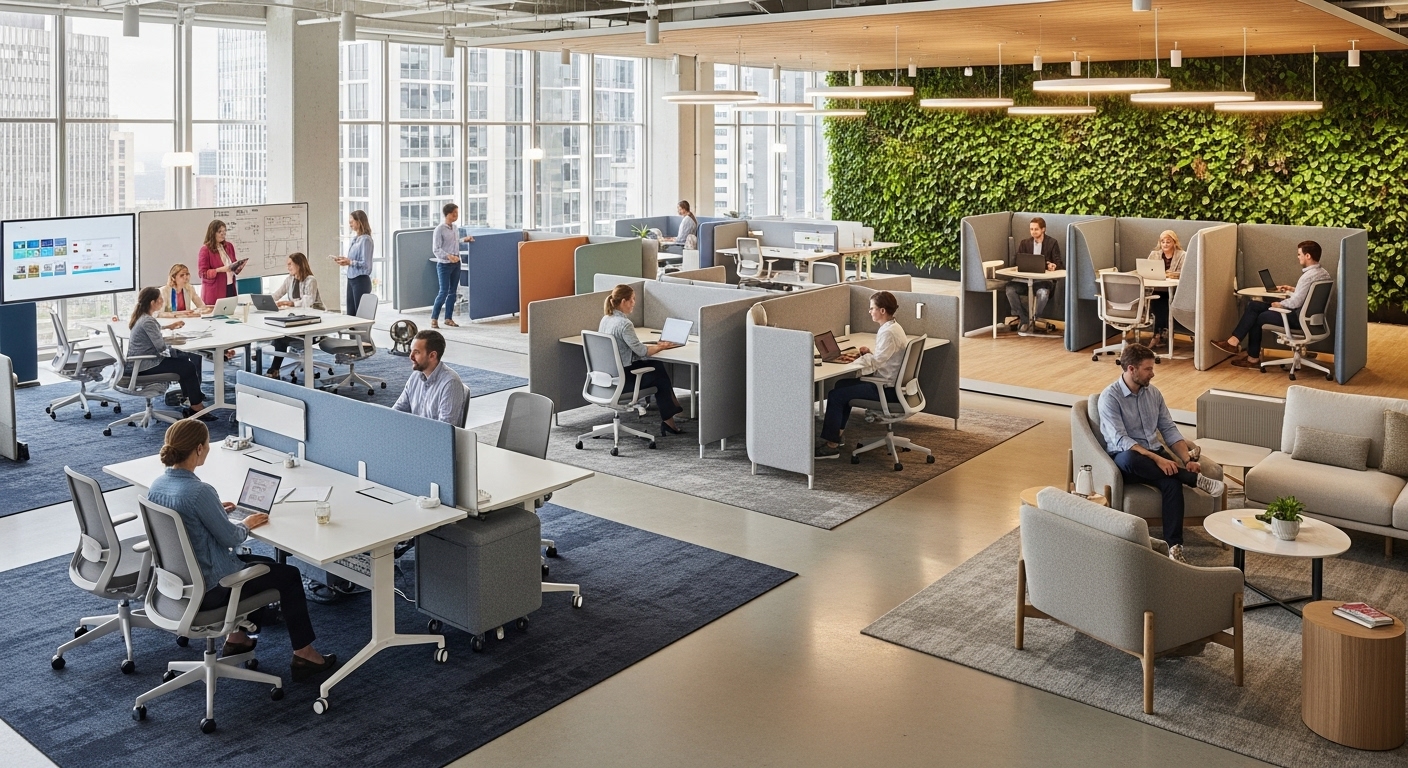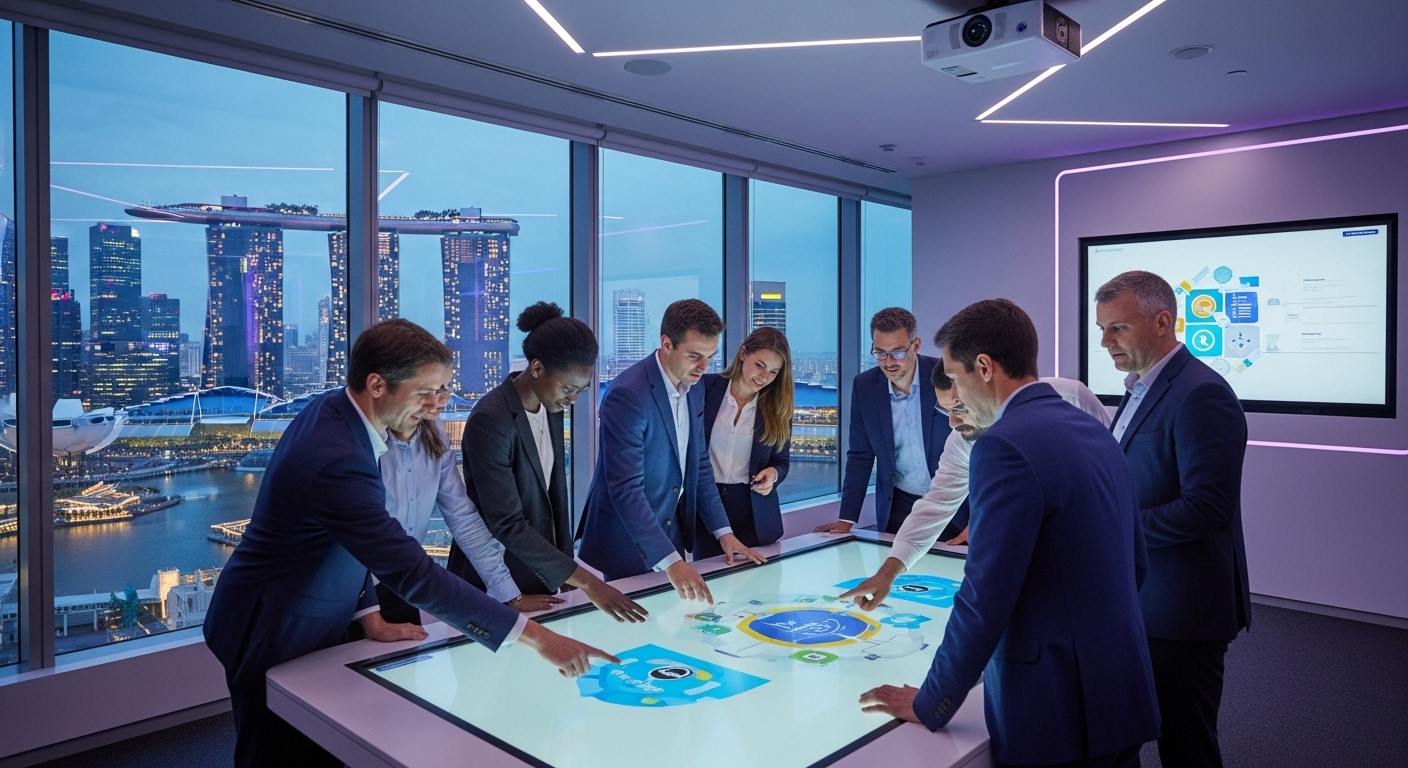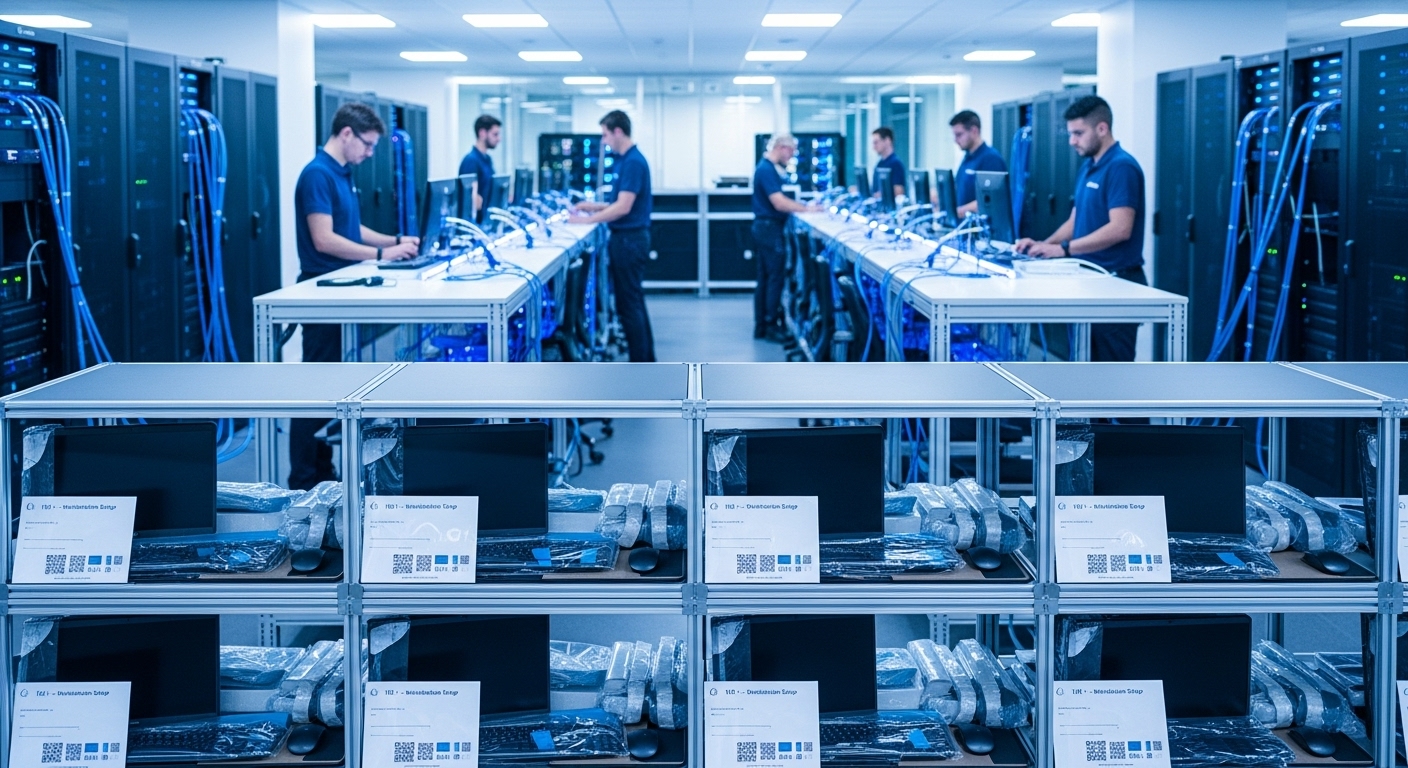In today’s competitive landscape, a company’s physical space is far more than a container for desks and computers; it is the physical embodiment of its brand, a living narrative that communicates values, culture, and vision to every person who walks through the door. Moving beyond the outdated practice of simply placing a logo in the lobby, leading organizations now understand that branding a space is about crafting an immersive experience. This strategic approach, known as environmental branding, transforms an office from a mere workplace into a cultural landmark. It’s a powerful tool that can foster a deeper sense of belonging among employees, leave a lasting impression on clients, and tangibly express the very soul of the company. In a world where brand identity is paramount, your office space is arguably your most powerful, three-dimensional asset. This article will explore how to infuse your brand’s essence into your environment, creating a space that doesn’t just house your team, but actively inspires and defines it. We will delve into the core principles of environmental branding, from the psychology of color and layout to the art of sensory engagement and digital integration, providing a roadmap to building your own living brand.
Beyond the Logo: The Core Principles of Environmental Branding
Environmental branding is the strategic art of expressing a brand’s identity across a built environment to create a memorable and immersive experience. It’s a holistic discipline that transcends interior decoration, aiming to build a direct, emotional connection between people and the space they inhabit. At its heart, it’s about making a brand’s abstract qualities—its values, mission, and personality—tangible. Three core principles guide this transformation. First is authenticity. The design must be a genuine reflection of the company’s culture. If a company values transparency and collaboration, an office filled with closed-off, hierarchical private offices sends a conflicting message. The space must align with the reality of how the team works and interacts. Second is consistency. The physical environment should feel like a seamless extension of the brand’s other touchpoints, including its website, marketing materials, and product design. The color palette, typography, and tone of voice should be coherent, reinforcing the brand identity at every turn. Finally, there is intentionality. Every element, from the choice of furniture and materials to the artwork on the walls, must have a purpose. There is no room for generic décor. Each choice should contribute to the overall narrative, reinforcing the brand’s story and what it stands for. This deliberate approach ensures that the space is not just beautiful, but also meaningful, turning every corner into a subtle reminder of the collective purpose and identity that binds the organization together.
The Psychology of Space: Using Color and Layout to Shape Perception
The design of a workspace has a profound and often subconscious impact on the people within it. By strategically leveraging color psychology and spatial layout, you can actively shape perception, influence mood, and encourage specific behaviors that align with your brand’s ethos. Color is one of the most powerful tools in this arsenal. It’s not merely about applying your brand’s primary colors to every wall; it’s about understanding their psychological impact. For instance, blues can evoke feelings of trust, stability, and calm, making them ideal for client-facing areas or spaces designed for focused work. Greens are associated with growth, balance, and nature, which can reduce stress and are well-suited for common areas or creative zones. Energetic colors like orange and yellow can stimulate creativity and enthusiasm, but should be used thoughtfully in brainstorming rooms or collaborative hubs to avoid overstimulation. The layout of the space is equally critical. An open-plan design can promote communication and a sense of egalitarianism, directly reflecting a brand that values transparency and teamwork. Conversely, incorporating a variety of spaces, such as private pods for deep work, quiet zones, and informal lounges for casual interaction, shows that a brand values both collaboration and individual focus. As workplace designer Robert Propst noted:
“The office of today is a wasteland. It saps vitality, blocks talent, frustrates accomplishment. It is the daily scene of unfulfilled intentions and failed effort.”
This sentiment highlights the importance of moving beyond cookie-cutter designs. By intentionally designing layouts that guide movement, facilitate desired interactions, and provide for diverse work styles, a company can create an environment that not only looks like its brand but also functionally supports the culture it aims to cultivate.
Materializing Your Mission: Weaving Your Story into the Office Fabric
Your company’s story—its history, its triumphs, its vision for the future—is a unique and powerful asset. Environmental branding provides the canvas to bring this narrative to life, transforming abstract concepts into tangible elements woven directly into the office fabric. This goes far beyond a framed mission statement in the reception area. It’s about creating a journey of discovery for employees and visitors alike. A powerful technique is to create a timeline wall, a visual installation that chronicles the company’s evolution from its humble beginnings to its current achievements. This not only instills a sense of pride and history among employees but also communicates stability and a legacy of success to clients. Another effective method is to name meeting rooms and common spaces after significant projects, company pioneers, or core values. A conference room named “Project Apollo” or “The Innovation Garage” immediately sets a tone and purpose for the conversations that happen within. Furthermore, custom art and graphics can serve as potent storytelling devices. This could be a mural depicting the community the company serves, an installation made from the company’s own products, or abstract art that visually interprets a core brand value like ‘synergy’ or ‘disruption’. The materials chosen also tell a story; using locally sourced wood might communicate a commitment to community and sustainability, while sleek metal and glass can project a forward-thinking, technological edge. By embedding these narrative elements throughout the workspace, you create an environment that continuously and passively communicates what your brand is all about. The office becomes a living document of your journey, reinforcing your mission and making every employee a part of that ongoing story.
Engaging the Senses: Crafting a Multi-Sensory Brand Experience
While sight is the most obvious sense to engage in design, a truly immersive brand environment appeals to all the senses. Crafting a multi-sensory experience can create deeper, more lasting emotional connections to your brand, making the workspace not just a place to see, but a place to feel. This holistic approach, often called sensory branding, acknowledges that our perception is shaped by a symphony of inputs. Consider the power of sound. The acoustics of a space are critical. An office plagued by echoes and distracting noise can feel chaotic and stressful. Strategic sound design might involve sound-absorbing materials, designated quiet zones, and even curated ambient music or white noise in common areas to create a specific mood—be it calm and focused or energetic and collaborative. Then there is the sense of scent. A subtle, signature scent diffused in the lobby or client-facing areas can create a powerful and immediate brand association. The scent should be pleasant and professional, aligning with the brand’s personality—for example, a clean, crisp scent for a tech company or a warm, calming scent for a wellness brand. The sense of touch is engaged through materials and textures. The feel of a rough-hewn wooden conference table, a plush velvet armchair, or a cool metal door handle contributes to the overall perception of the brand’s quality and character. Even the sense of taste can be incorporated. A hospitality station offering locally roasted coffee, artisanal teas, or healthy snacks that reflect a company culture of well-being is a small but impactful detail. By orchestrating these sensory elements, you move beyond mere visual branding to create a rich, layered environment that fully envelops employees and visitors, making the brand experience unforgettable and deeply ingrained.
The Employee as Brand Ambassador: Designing for Culture and Connection
While impressing clients is a key goal of environmental branding, its most profound impact is often felt internally. A well-branded workspace is a powerful tool for shaping company culture and transforming employees into enthusiastic brand ambassadors. When the physical environment consistently reflects the values the company espouses, it validates the culture and fosters a powerful sense of belonging. This is where design moves from aesthetics to human resources. The layout must be tailored to support the desired way of working. If your brand champions innovation through cross-functional collaboration, the office must feature dynamic, flexible spaces that encourage spontaneous interaction—think writeable walls, mobile furniture, and project-based hubs. If the culture prioritizes well-being, the space should include elements like a wellness room, access to natural light, biophilic design (integrating natural elements), and ergonomic furniture. Furthermore, the space should be designed to celebrate the people who are the lifeblood of the brand. Featuring employee successes on digital screens, creating a wall showcasing team photos and personal milestones, or designing a community board for shared interests helps humanize the brand and reinforces that employees are valued contributors to its story. By investing in an environment that caters to their needs and reflects their collective identity, a company demonstrates its commitment to its team. This fosters higher engagement, improves morale, and boosts retention. Employees who feel proud of their workspace are more likely to feel proud of their employer, naturally becoming advocates for the brand in their professional and personal networks.
Dynamic and Digital: Integrating Technology for a Future-Proof Brand
In an increasingly digital world, a modern branded environment must seamlessly integrate technology to remain relevant, dynamic, and efficient. Digital integration is not about installing screens for technology’s sake; it’s about using them to enhance the brand story and improve the user experience within the space. Smart, strategic use of technology can ensure your branded environment is a living, breathing entity that evolves with your company. Digital signage is a prime example. Instead of static posters, dynamic screens in the lobby can offer personalized welcome messages to important clients, showcase recent company achievements, stream live social media feeds that feature the brand, or display real-time dashboards of business KPIs, reinforcing a culture of transparency and data-driven success. Interactive installations can take this a step further. Imagine a touch-screen wall that allows visitors to explore the company’s history, browse a portfolio of projects, or learn about the team. This creates an engaging, self-guided experience that tells the brand story in a compelling, modern way. Technology can also be integrated into the functional fabric of the office. Branded mobile apps that allow employees to book meeting rooms, control lighting and temperature, or even order coffee from the internal café streamline daily operations while reinforcing the brand at a practical level. The key is to ensure the technology is both user-friendly and thematically consistent with the brand’s identity. It should feel like a natural extension of the physical space, not a clunky afterthought. By thoughtfully weaving digital elements into your environmental design, you create a future-proof workspace that is not only visually impressive but also intelligent, responsive, and fully aligned with a forward-thinking brand identity.
In conclusion, branding your space is a profound strategic endeavor that transcends mere decoration. It is the process of transforming four walls and a roof into a cultural landmark—a living, breathing embodiment of your brand’s identity. By moving beyond the logo and embracing the core principles of authenticity, consistency, and intentionality, you lay the foundation for a truly immersive environment. The journey involves a deliberate orchestration of psychological cues through color and layout, weaving your company’s unique narrative into the very fabric of the office. It’s about creating a rich, multi-sensory experience that engages on every level, appealing to sound, scent, and touch, not just sight. Most importantly, it is an investment in your people. A workspace designed for culture and connection turns employees into the most powerful brand ambassadors, fostering a sense of pride and belonging that becomes a competitive advantage. By integrating dynamic digital technology, you ensure this branded environment remains agile and future-proof. Your office is not a cost center; it is your most powerful storytelling tool, a daily testament to your values, and the physical heart of your brand. When you treat it as such, you don’t just build an office—you build a destination that inspires innovation, impresses stakeholders, and solidifies your place in the market.





